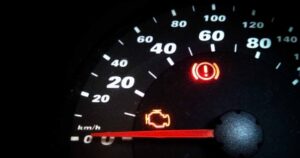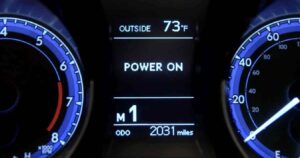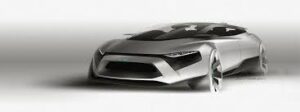If you are a car enthusiast, you might have heard of the term “cammed car” or “camming a car”. But what does it mean and why would you want to do it?
In this article, we will explain what a camshaft is, how it affects engine performance and sound, how to cam your car, and what are the pros and cons of doing so.
We will also discuss the legal status and regulations of camshafts in different countries, how to install a camshaft in your car, how to choose the right camshaft for your car, and how to recognize a cammed car.
Table of Contents
ToggleWhat is a Camshaft and How Does It Affect Engine Performance?
A camshaft is a rotating shaft that controls the opening and closing of the valves in an internal combustion engine. The valves allow air and fuel to enter the combustion chamber and exhaust gasses to exit.
The timing, duration, and lift of the valve opening are determined by the shape and position of the lobes on the camshaft. The lobes are also called cams, hence the name camshaft.
The camshaft plays a crucial role in engine performance because it affects how much air and fuel can enter the cylinder and how efficiently they can be burned.
By changing the camshaft, you can alter the engine’s characteristics such as power, torque, fuel efficiency, emissions, and sound. A cammed car is a car that has a modified or aftermarket camshaft that differs from the original one.
The Effects of a Cammed Engine on Performance and Sound
There are many types of camshafts available for different purposes and preferences. Some common terms used to describe them are:
Stock camshaft: This is the original camshaft that comes with the car from the factory. It is designed to provide a balance between performance, fuel economy, emissions, reliability, and noise.
Performance camshaft: This is a camshaft that is designed to improve performance by increasing power and torque at higher engine speeds. It usually has higher lift and longer duration than stock camshafts, which means more air and fuel can enter the cylinder and stay longer. However, this also means more emissions, lower fuel efficiency, reduced low-end torque, rougher idle, and louder sound.
Mild camshaft: This is a camshaft that is slightly more aggressive than stock but not as much as performance. It provides a moderate increase in power and torque without sacrificing too much fuel economy, emissions, or drivability. It also has a slightly louder sound than stock but not as loud as performance.
Lumpy camshaft: This is a camshaft that has very high lift and long duration, which results in very high power and torque at very high engine speeds. However, this also means very poor fuel economy, emissions, drivability, idle quality, and reliability. It also produces a very distinctive sound that is often described as “lumpy” or “choppy” because of the irregular firing of the cylinders.
The sound of a cammed engine is one of the main reasons why some people choose to modify their camshafts. A cammed engine can produce a deeper, throatier, or raspier sound than stock depending on the type of camshaft used. Some people find this sound appealing and exciting while others find it annoying or disturbing.
The Process and Methods of Camming a Car
Camming a car involves replacing the original camshaft with a different one that suits your desired performance and sound goals. There are two main methods of doing this:
Bolt-on: This is the simplest and most common method of camming a car. It involves removing the old camshaft and installing the new one without changing any other parts of the engine. This method is relatively easy, quick, and cheap but it also has some limitations such as compatibility issues with other components, potential loss of warranty or insurance coverage, or legal troubles depending on your local laws.
Custom: This is the more complex and less common method of camming a car. It involves modifying or replacing other parts of the engine such as valves, springs, lifters, rockers, pushrods, pistons, rods, crankshafts etc. along with the new camshaft. This method allows for more flexibility, customization, and optimization but it also requires more skill, time, money, and equipment.
The Benefits and Drawbacks of Putting a Cam in Your Car
Putting a cam in your car can have both positive and negative effects depending on what type of camshaft you choose and how you use your car. Some of the possible benefits are:
- Increased power and torque at higher engine speeds
- Improved throttle response and acceleration
- Enhanced engine sound and personality
- More fun and enjoyment from driving
Some of the possible drawbacks are:
- Decreased fuel economy and emissions
- Reduced low-end torque and drivability
- Rougher idle and vibration
- Louder noise and disturbance
- Higher wear and tear and maintenance costs
- Loss of warranty or insurance coverage
- Legal issues or fines
The Legal Status and Regulations of Camshafts in Different Countries
The legal status and regulations of camshafts vary widely from country to country and even from state to state. Some countries have strict laws that prohibit or limit the modification of camshafts or any other engine parts while others have more lenient or no laws at all. Some of the factors that can affect the legality of camshafts are:
Emissions standards: Some countries have strict emissions standards that require all cars to meet certain levels of pollutants such as carbon monoxide, hydrocarbons, nitrogen oxides, etc. Camming a car can increase the emissions of these pollutants, which can result in failing emissions tests or inspections, fines, or penalties.
Noise limits: Some countries have noise limits that restrict the maximum decibel level that a car can produce. Camming a car can increase the noise level of the engine, which can result in violating noise ordinances, complaints from neighbors, or fines.
Safety standards: Some countries have safety standards that require all cars to have certain features or equipment such as airbags, seat belts, brakes, etc. Camming a car can affect the performance or functionality of these features or equipment, which can result in compromising safety, failing safety tests or inspections, fines, or penalties.
Before you decide to cam your car, you should check your local laws and regulations to make sure you are not breaking any rules or risking any consequences. You should also consult with a professional mechanic or tuner who can advise you on the best camshaft for your car and how to install it properly.
How to Install a Camshaft in Your Car?
Installing a camshaft in your car is not a simple task that you can do by yourself unless you have the necessary skills, tools, and experience.
It is a complex and delicate process that involves opening up the engine, removing the old camshaft, installing the new one, adjusting the timing, and reassembling everything. If done incorrectly, it can cause serious damage to your engine or other parts of your car.
Therefore, it is highly recommended that you hire a professional mechanic or tuner who can install a camshaft in your car safely and correctly.
They will also be able to tune your engine to optimize its performance and sound with the new camshaft. T
he cost of installing a camshaft in your car will depend on several factors such as the type of camshaft, the method of installation, the labor rate, etc. It can range from a few hundred to several thousand dollars.
How to Choose the Right Camshaft for Your Car?
Choosing the right camshaft for your car is not an easy decision that you can make based on personal preference alone. It is a technical decision that requires careful consideration of several factors such as:
- Your car’s make, model, year, engine size, type, etc.
- Your car’s current condition, performance, modifications, etc.
- Your desired performance and sound goals
- Your budget and availability of camshafts
- Your local laws and regulations
You should do some research on different types of camshafts that are compatible with your car and compare their specifications such as lift, duration, lobe separation angle, etc. You should also read reviews from other users who have installed similar camshafts in their cars and learn from their experiences. You should also consult with a professional mechanic or tuner who can recommend the best camshaft for your car based on your needs and expectations.
The Signs and Symptoms of a Cammed Car
If you are wondering whether a car is cammed or not, there are some signs and symptoms that you can look for such as:
The sound: A cammed car will usually have a louder, deeper, throatier, or raspier sound than stock depending on the type of camshaft used. You can listen to the sound of the engine at idle, acceleration, deceleration, etc. and compare it with the sound of a stock car.
The performance: A cammed car will usually have improved performance at higher engine speeds but reduced performance at lower engine speeds depending on the type of camshaft used. You can test the performance of the car by checking its acceleration, top speed, fuel economy, etc. and compare it with the performance of a stock car.
The appearance: A cammed car may have some visible modifications or accessories that indicate that it has been modified such as aftermarket exhaust systems, air intakes, gauges, stickers, etc. You can look for these clues on the exterior or interior of the car.
However, these signs and symptoms are not conclusive or definitive because they can vary depending on many factors such as
- The engine type, size, configuration, etc.
- The camshaft type, brand, quality, etc.
- The installation method, quality, etc.
- The tuning and calibration of the engine
- The maintenance and care of the engine
- The environmental conditions such as temperature, humidity, altitude, etc.
Therefore, the only way to be sure whether a car is cammed or not is to inspect the engine and check the camshaft itself. However, this may not be possible or advisable without the permission and assistance of the owner or a mechanic.
Conclusion
Camming a car is a popular and effective way of modifying the engine to improve its performance and sound.
However, it also involves some risks and challenges such as legal issues, compatibility issues, reliability issues, etc.
Therefore, before you decide to cam your car, you should weigh the pros and cons carefully and do your homework thoroughly.
You should also seek professional help and advice from a mechanic or a tuner who can guide you through the process and ensure the best results. Camming a car can be a rewarding and enjoyable experience if done right.
























